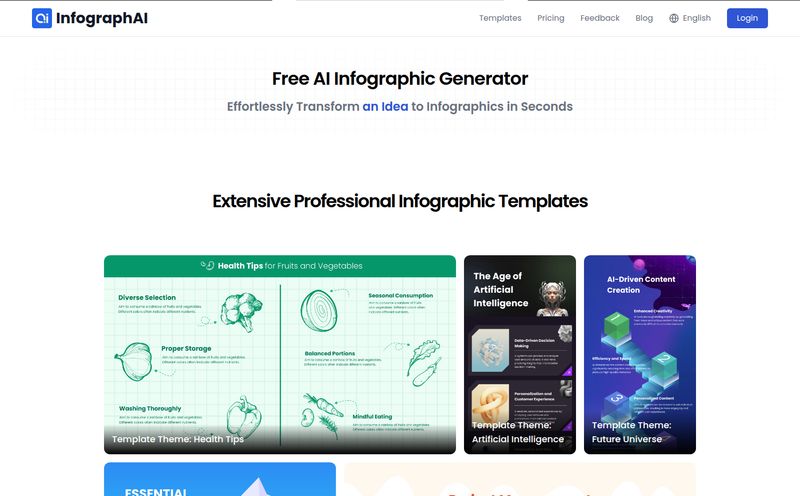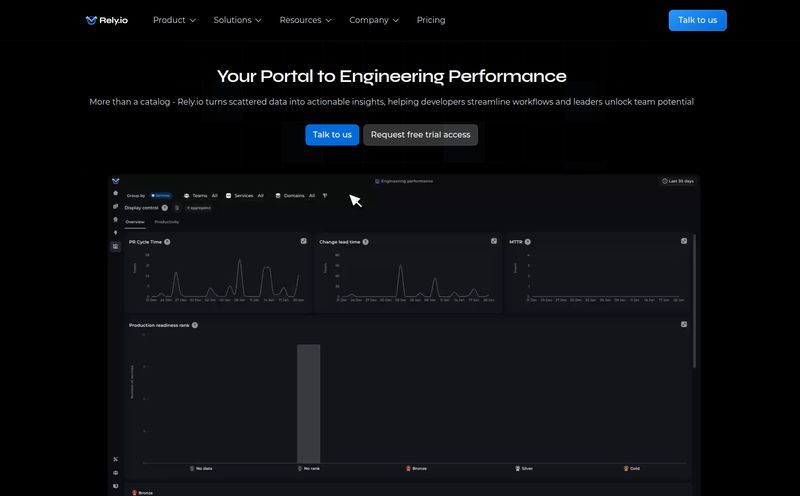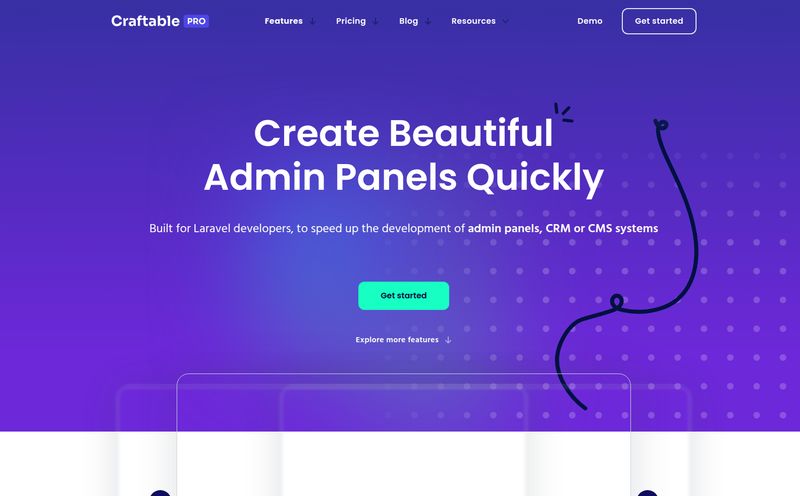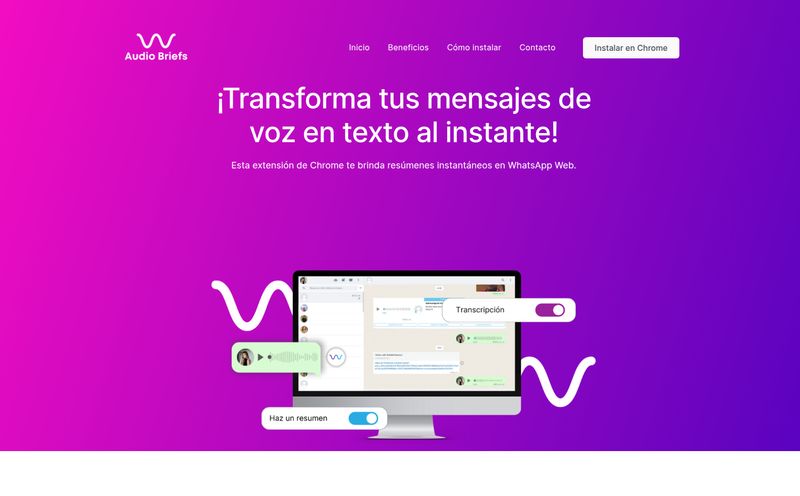If you've spent any time in the AI space over the last year, you’ve heard the acronym RAG—Retrieval-Augmented Generation—thrown around more than 'synergy' in a corporate meeting. And for good reason. It’s the magic that lets us make Large Language Models (LLMs) like GPT-4 actually useful for specific, proprietary tasks. It’s how you get an AI to know your business, not just the entire internet.
I’ve been there, deep in the trenches, trying to stitch together a RAG pipeline. Wrestling with vector embeddings, chunking strategies, and a mess of Python scripts that felt like they'd break if you looked at them funny. It’s powerful, but man, it can be a headache. So when a tool like Superpowered AI lands on my desk promising an “end-to-end knowledge retrieval solution” for both developers and no-code folks, my cynical veteran SEO-brain kicks in. Is this another half-baked platform, or is it the real deal?
Spoiler: I'm pleasantly surprised. Let's get into it.
What Exactly is Superpowered AI?
Before we go further, let's demystify RAG. Imagine an LLM is a brilliant, world-class expert who has read almost everything ever published. Now, you need them to answer a question about your company's internal Q3 sales report. They've never seen it. They can't help. RAG is the process of handing them that specific report right before you ask the question. Superpowered AI is the super-efficient librarian that finds the exact page in that report, highlights the relevant paragraph, and hands it to the expert. Simple, right?
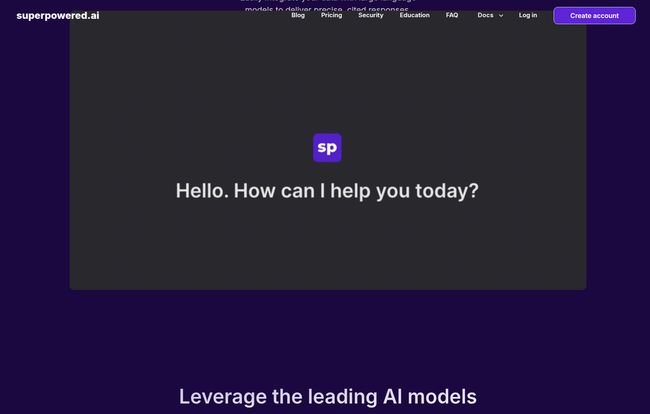
Visit Superpowered AI
This platform acts as that middle layer. You connect your data—be it PDFs, text files, or even scraped websites—and it creates a searchable “knowledge base.” Then, when you need to build a chatbot, generate a report, or analyze a document, Superpowered AI fetches the relevant snippets from your data and injects them into the prompt for a powerful model like OpenAI's GPT-4, Anthropic's Claude, or Mistral. The result? AI-generated content that is grounded in your reality, not just public web data.
Who Should Be Looking at This Tool?
This is where things get interesting. Most AI tools I see either go all-in on a dead-simple UI for beginners, or they offer a hyper-complex API for hardcore developers. Superpowered AI is trying to walk that line and serve both, which is ambitious to say the least.
For the Developers in the Room
If you live in a world of code, you'll be happy to see a clean REST API and a Python SDK. This means you can integrate Superpowered AI's knowledge retrieval capabilities directly into your own applications without having to build the entire data ingestion and vector search infrastructure from scratch. Think of all teh boilerplate code you get to skip. You’re not managing a Pinecone instance or wrestling with ChromaDB. You just upload your data through their system and then query it with a simple API call. It frees you up to focus on the application logic, not the plumbing.
And For the Rest of Us (The No-Code Crowd)
This is where I think Superpowered AI could really find its audience. They have a slick, intuitive user interface that lets non-technical users do some seriously powerful stuff. You can literally drag and drop your company's SOPs, past marketing materials, or support documentation, and create a knowledge base. From there, you can use their pre-built workflows to build a customer support chatbot or a content creation assistant without writing a single line of code. This is a massive win for small businesses, marketing teams, researchers, and solo entrepreneurs who want the power of custom AI without the six-figure developer salary.
The Features That Actually Matter
A feature list is just a feature list until you see how it applies. Here’s what stood out to me.
Building Your External Brain
Creating your knowledge base is the first step, and it's refreshingly straightforward. You can create an unlimited number of them, which is great for segmenting data. For instance, one for marketing, one for support, and another for legal. They also emphasize security, using AES-256 encryption for data at rest and in transit. In a world where everyone is (rightfully) paranoid about feeding their private data into an AI, that's a crucial trust signal.
Putting That Brain to Work
Once your data is in, you can access it through several “workflows.” There’s a basic Query for simple lookups, a Chat mode for building conversational bots, a Long-Form generator that can write articles up to 3,000 words based on your knowledge, and a Document Review tool for summarizing and extracting info. Imagine feeding it a 100-page legal contract and just asking, “What are the termination clauses for Party A?” That's the kind of efficiency we're talking about.
The Safety Nets I Appreciate
Here’s a feature that geeks like me love: Fallback Models. We’ve all seen it. OpenAI has an outage or performance degrades, and suddenly every AI app on the planet grinds to a halt. Superpowered AI has a clever solution. If the primary model you've selected is unavailable, it automatically switches to a backup model from a different provider, say from OpenAI to Anthropic. For anyone building a mission-critical business application, that’s huge. It's the difference between a minor hiccup and a full-blown service outage.
Let's Talk About the Elephant in the Room: The Price
Alright, this is the part that made me raise an eyebrow in a good way. The pricing model is... different. And I think it’s brilliant.
Superpowered AI uses a Bring Your Own Key (BYOK) model. Here’s how it breaks down:
| Component | Cost |
|---|---|
| Superpowered AI Platform Access | $30 per month flat fee |
| LLM Usage (OpenAI, Anthropic, etc.) | You pay the provider directly at their standard API rates. |
Let me translate that. You pay them a flat $30 a month for their software—the UI, the data management, the fallback logic, all of it. Then, you plug in your own API key from OpenAI or another provider. When you make a call, you pay OpenAI directly for the tokens you use. There's no markup. No weird, confusing credit system. No hidden fees.
Think of it like this: you're paying a small monthly fee to rent a world-class, fully-equipped professional kitchen (Superpowered AI). You still have to pay for your own ingredients (the API calls), but you get them at grocery store prices, not inflated restaurant prices. For anyone who plans on using AI at scale, this transparency is a game-changer for managing and predicting costs.
What's Great and What's... Still Brewing?
No tool is perfect, so let’s be real. The biggest upside is the incredible balance it strikes. It's an accessible on-ramp to enterprise-grade RAG technology. The BYOK pricing is refreshingly honest, and the fallback model feature shows a real understanding of production needs.
On the flip side, the platform is still growing. The website mentions that integrations with automation giants like Zapier, Make.com, and Bubble are “in the works.” For the no-code community, those integrations are the holy grail. The fact they aren't here yet is a temporary drawback, but it’s also a promising sign that they know exactly what their users want and are actively building it. I'd rather a company be honest about its roadmap than pretend a feature is ready when it's not.
My Final Verdict on Superpowered AI
So, is Superpowered AI worth your time and money? In my opinion, yes, absolutely. Especially for a specific type of user.
If you're a developer who wants to build RAG-powered apps without the infrastructure nightmare, this is a fantastic accelerator. If you're a small business or a non-technical team lead who wants to leverage your own data with AI, this is one of the most accessible and fairly-priced entry points I've seen.
It occupies this beautiful middle ground. It's not as raw as building from scratch with LangChain, but it’s far more transparent and customizable than many of the all-in-one platforms that hide their pricing and hit you with massive bills later. That $30 flat fee is a signal of confidence. They’re betting that their tool is good enough that they don’t need to profit from your AI usage.
It's a solid, well-thought-out platform that's clearly built by people who understand the real-world problems of implementing AI. With a 14-day free trial, it’s a no-brainer to take it for a spin.
Frequently Asked Questions (FAQ)
1. In simple terms, what is Retrieval-Augmented Generation (RAG)?
RAG is a technique that makes AI smarter by giving it specific, private information to use when generating a response. Instead of only using its general internet knowledge, it can 'retrieve' facts from your documents, ensuring answers are accurate and relevant to your context.
2. Is Superpowered AI a good choice for beginners with no coding experience?
Yes. While it has powerful tools for developers, its no-code user interface is designed for beginners. You can upload files, manage knowledge bases, and use AI workflows without writing any code, making it very accessible.
3. Can you explain the 'Bring Your Own Key' (BYOK) pricing again?
Certainly. You pay Superpowered AI a fixed $30/month for their platform. For the actual AI processing, you use your own account with a provider like OpenAI. This means you pay the AI provider directly for what you use, at cost, with no hidden markups from Superpowered AI.
4. What kinds of files can I upload to my knowledge base?
The platform is designed to handle a variety of common file types, such as PDFs, Word documents, text files, and can also connect to websites to pull in data. This covers most standard business and personal documentation needs.
5. How secure is my data with Superpowered AI?
They take security seriously. Your data is protected with AES-256 encryption, a standard used by banks and governments, both when it's stored (at rest) and when it's being transferred (in transit). This ensures your proprietary information remains confidential.
6. Do I have to pay both Superpowered AI and OpenAI?
Yes, and that's the point. You pay a small, predictable fee to Superpowered AI for their excellent software and a variable fee to the LLM provider (like OpenAI or Anthropic) based purely on your usage. This model is often more cost-effective and transparent than bundled services.
